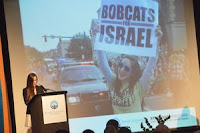What do you get when you bring 23 Jewish artists to a bucolic, 3,000-acre campus in Simi Valley and keep them together for three days with no cellphone service? You get shared visions, simpatico new friendships, connections and boundless creativity.
Those are just some of the results from the recent L.A. artist retreat titled “Reciprocity,” which took place in mid-November and signaled the public launch of the Institute for Jewish Creativity (IJC) at American Jewish University (AJU). The IJC looks to integrate Jewish artists into the broader Jewish community, spark cultural programming for Jewish audiences of all ages and spur artistic contributions that benefit Jewish culture.
Continue reading.
Follow us on

























